We’ve always found Metroidvania to be an odd term, largely because adventures like Aztec, The Maze Of Galious and Nodes Of Yesod existed long before both Metroid and Castlevania. It was arguably Metroid that helped crystallise the concept for many gamers though and that concept was largely refined and perfected in 1994. The game in question is Super Metroid, Yoshio Sakamoto’s hugely ambitious sequel, which would not only take full advantage of the Super Nintendo’s extra power, but would serve as an end to the story arc that had first begun with the 1987 Famicom Disk release of Metroid and continued with Metroid II: Return Of Samus on Nintendo’s Game Boy. We’d also argue that it’s probably the Metroid game most gamers think of whenever the term Metroidvania comes up.
While it’s well known that the Metroid series was heavily influenced by Ridley Scott’s Alien it could be argued that Super Metroid is perhaps the most cinematic of Samus’ early adventures. “When I first heard the words, ‘The last Metroid is in captivity, the galaxy is at peace,’ it was a huge surprise,” admits Darren Kerwin, founder of the popular Metroid website Shinesparkers. “Up until this point, I hadn’t heard much voice acting in a SNES game, and those words spoken by Dan Owsen, made the game’s opening highly memorable.”
Darren’s point about Super Metroid’s cinematic feel is an interesting one, because while it does indeed feature that memorable opening, recalling Samus’ earlier exploits by using text and black-and-white stills, the rest of the story is cleverly told in-game. “On release, it was Super Metroid’s storytelling that really stood out to me,” remembers Derek Yu, creator of the Spelunky games and the Metroidvania Eternal Daughter. “I still find it impressive how much narrative the game is able to convey with such few words – after the brief introduction you rarely lose control of Samus. And the feeling of tension and mystery never lets up until you finally escape from Zebes.”
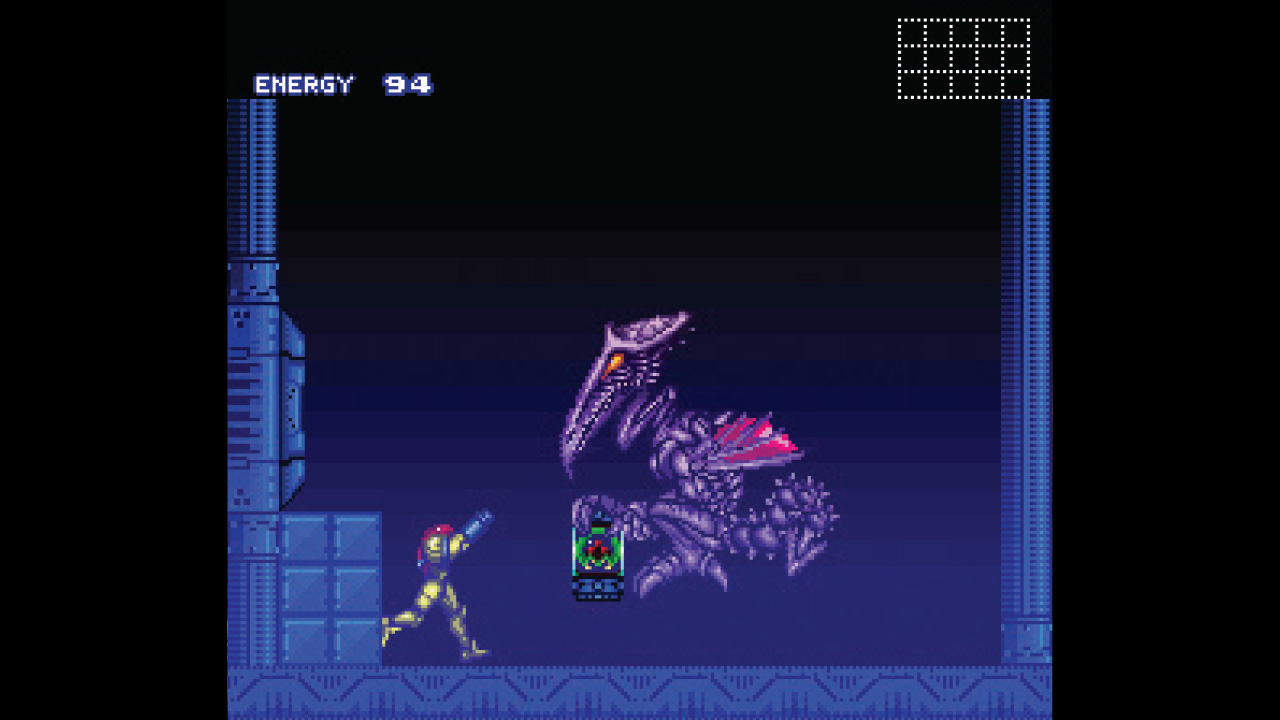
Super Metroid reviewed extremely well with critics who all made note of its exceptional atmosphere and neat game mechanics. Nintendo Magazine System called it, “A perfectly designed game with negligible flaws,” in its 92% review. Super Play was equally enthused stating, “The game’s singular most remarkable feature is the atmosphere,” with the team’s import review ending with another 92%. In a 5/5 GamePro review Slasher Quan said that “visually Super Metroid sets a wonderfully appropriate and dark mood”, and also praised Super Metroid’s audio saying it was “fairly sombre and subdued, yet really cool at the same time”.
Thomas Happ, creator of Axiom Verge and its sequel also remembers the impact Nintendo’s game had on him. “I was in high school at the time. I was really excited to play a 24 megabit game because it indicated it would be huge. Of course I loved it and replayed it multiple times until I could get the fastest time and 100% items (though I don’t think I did both at once).” Thomas also mentioned the atmosphere that impressed so many critics on release. “I’d say it’s crucial. Say you took the same gameplay but reskinned everything to look and sound like Yoshi’s Island; it would still be fun to play but it wouldn’t have the same resonance as the kind of creepy sci-horror feel of Metroid. The winding maze-like structure hits your brain in a similar place as eerie synth music and abandoned alien corridors.”
Tim Longo has been designing games since the late-Nineties and also feels Super Metroid’s rich atmosphere is one of its key successes. “It has a very unique and special version of science fiction,” he begins. “Like Zelda and Mario, there is almost nothing else out there like it in tone. Still to this day, even. It isn’t too dark, but it isn’t too cartoony. It has a great science-fiction feel, but somehow stands on its own. I think [Nintendo has] never been afraid of sticking with that retro sci-fi feel in the face of so many sci-fi trends that they could have adopted or chased. All of that was established in Super Metroid, really.”
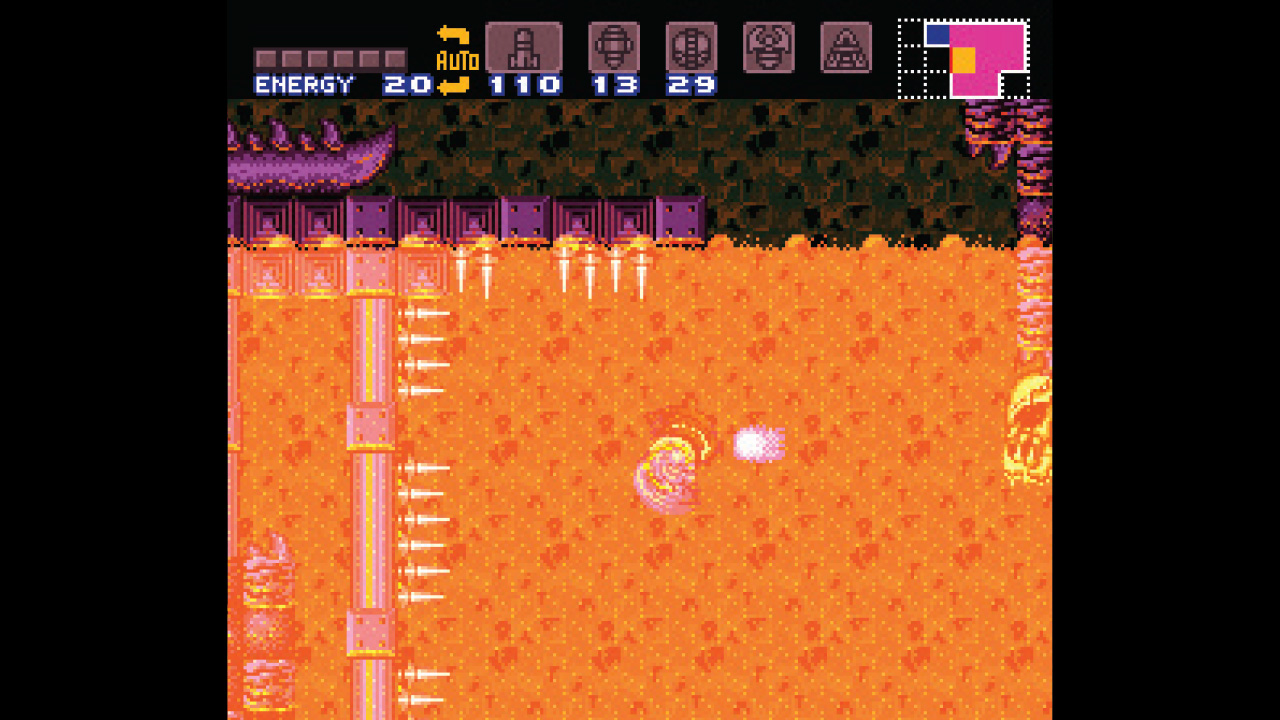
As mentioned earlier, Super Metroid refines the elements that Metroid introduced to many gamers. The additional power of the Super Nintendo also meant Nintendo’s sequel was aesthetically superior in every possible way. When Samus touches down on Zebes audio is kept to a minimum with only driving rain and the occasional crack of lightning to be heard, but it soon builds into some wonderfully eerie tunes as Samus explores (see the Aural Excellence panel). The different areas of Zebes in Metroid may have been colour coded, but they’re been significantly enhanced graphically for the 16-bit sequel meaning that every area is now instantly recognisable as Samus explores – from the lush, populated jungles of Upper Brinstar to the volcanic-strewn areas of Norfair and the stark metallic corridors found throughout Wrecked Ship.
In many ways Super Metroid’s locations are every bit as memorable as the creatures that reside in them and it’s not been lost on Jacobo Luengo Gomez who has worked on both Metroid: Samus Returns and Metroid Dread. “Environments are a crucial character within the game. They are not limited to being a mere excuse for you to go from one place to another, but each one tells their own story and has their reason for existing. Why is there a big broken glass pipe? Who or what has destroyed it? Could I do the same if I had enough power? This gives them a unique identity while as a player it helps you draw a road map despite the large size of the map.”
Those distinctive environmental markers are also mentioned by Drinkbox Studios’ Ian Campbell who was lead designer on Guacamelee! 2, which has many nods to the Metroid series. “In the early-to-mid stages, the game is always subtly guiding you and laying the groundwork for revelations to come,” he explains. “At first your movements are restricted in ways you don’t often understand or recognise, so the journey feels like your own while making sure you learn and master your abilities. At the same time, you’re going through so many memorable locations, you’re guaranteed to have flashes of insight one, two, or four hours later as you remember one of them and travel back to discover a new path forward.”
Primed and ready
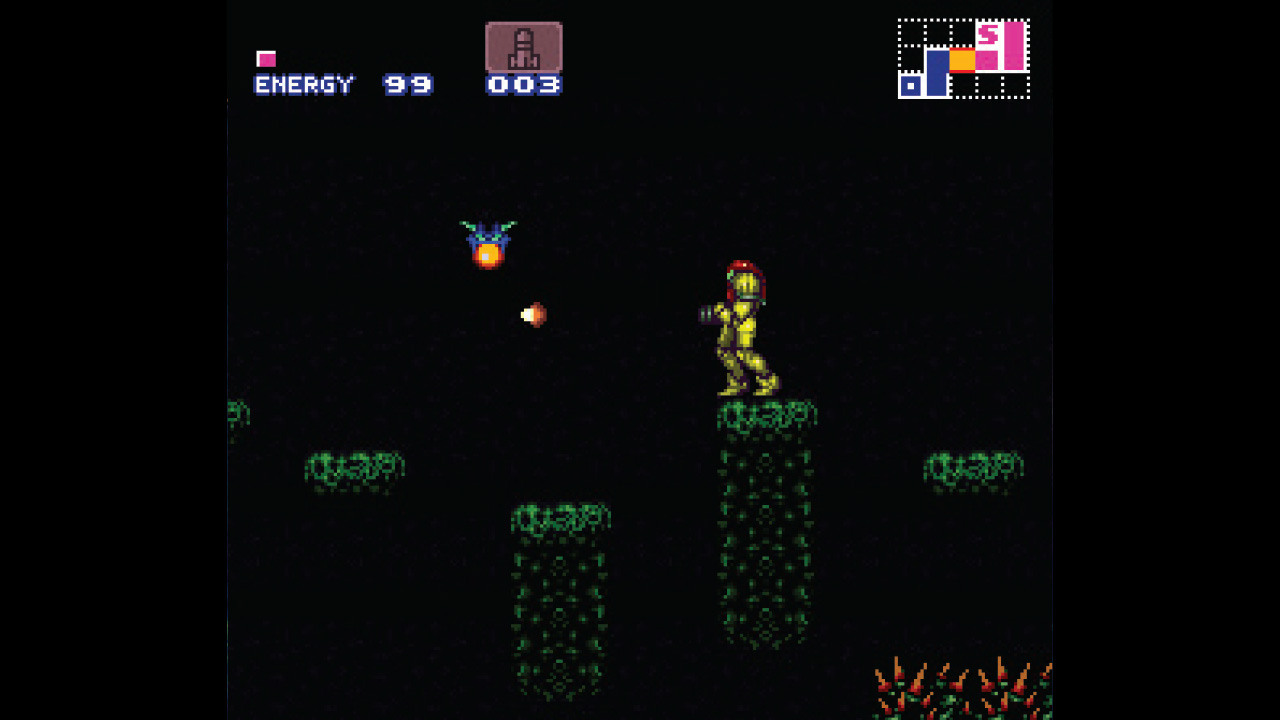
“You’re able to have a sense of place anywhere in the game, often without needing to consult the map.”
Jack Mathews is no stranger to the Metroid universe, having worked on all three Metroid Prime games. He’s well aware of the importance of Super Metroid’s environmental game design and it’s one of many things you’ll see repeated in the Prime trilogy. “You’re able to have a sense of place anywhere in the game, often without needing to consult the map,” he explains. “It makes the world feel lived-in and real.” It’s an aspect of the game that’s shared with Owlboy’s creator Simon Anderson. “There’s a lot of elements that make Super Metroid unique. An emphasis on how it handles the progression of exploration. Maybe the branching mechanics that the upgrades provide, or the captivating setting. But to me, if there’s one thing Super Metroid, and the Metroid series has always excelled at, it is the sense of environmental presence.”
Another key aspect of the game’s environmental design is not only the creatures that inhabit Zebes, but also how they feel part of an actual ecosystem – something that’s further driven home by graphical flourishes like egg sacs, broken cocoons and even dung. Many of them will need to be overcome if Samus wants to complete her mission, but unlike other games of the era it feels like they have a proper purpose here – whether it’s to be used as makeshift platforms so Samus can navigate hazardous areas, or to act as pointers for when the bounty hunter gets stuck. The Dachora for example, will visually show Samus how to perform the highly useful Shinespark technique, while a trio of Etecoons will perform the sequence-breaking Wall Jump for her. “Using enemy design and level design to complement each other is also one of my favourite aspects of the game,” explains Tim. “Most enemies are quite simple. But used in combination with good level design and environmental design and in combination with other enemy types, it makes for a lot of special and memorable challenges.”
If Super Metroid’s environment and monster designs are far more ambitious than its predecessors, the same can be said for its gargantuan map, which is surprisingly easy for Samus to navigate. This is mainly due to each area having its own distinct-looking environment, but also due to Nintendo’s decision to include a smaller mini-map in the top-right corner of the screen. Switch over to the main map and while it’s not as well signposted as more modern Metroidvanias it still offers tantalising glimpses of where you should consider heading to next. It also highlights the numerous save points, boss locations, entry points to new areas and even where most power-ups can be found.
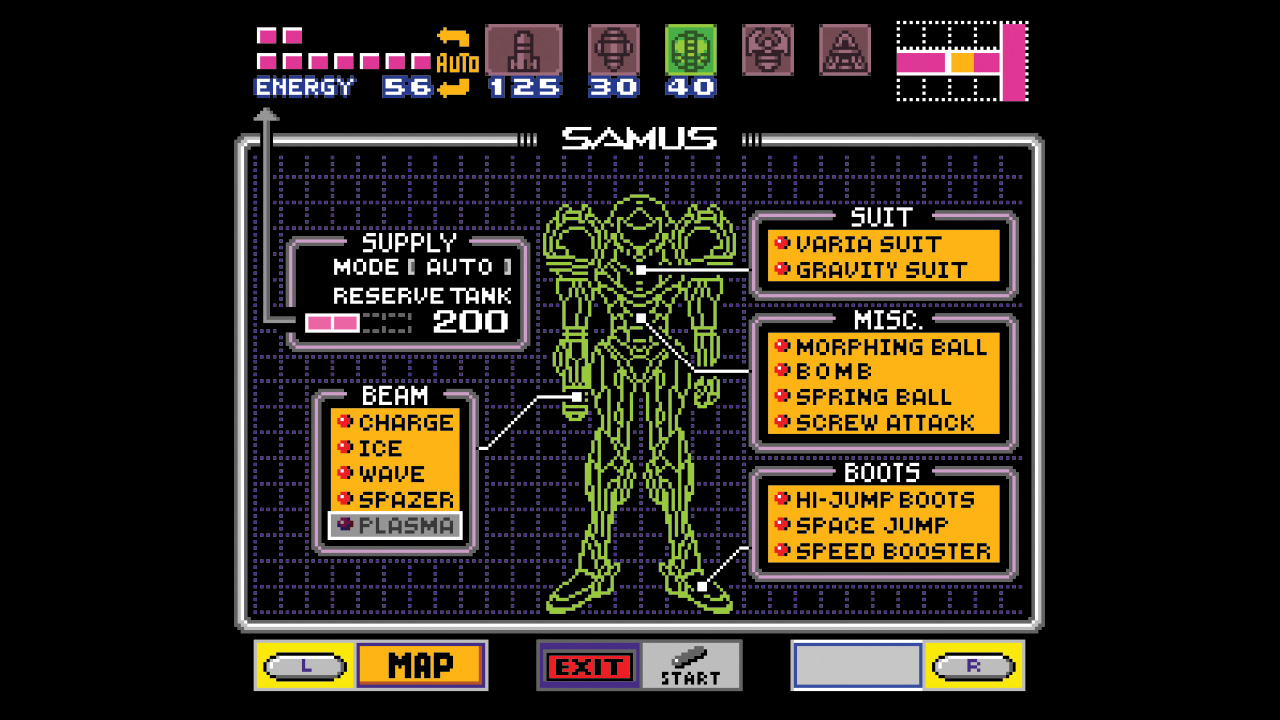
Jack feels the map, combined with Super Metroid’s world gives gamers, “A longing for continuing exploration, both because of incredible environmental art and atmosphere, and the longing of finding the ability to get you somewhere you are not able to go.” For Tim, Super Metroid’s map offers, “A clear and logical sense of progression through the world. Super Metroid is one of our best examples of allowing players to feel like they are discovering the world as they go but really the design is pushing them to where it wants them to go as well.”
While you can visit Map Rooms to get a better understanding of each new area of Zebes you’re visiting, areas are never fully revealed, meaning that exploration is a core component of Nintendo’s game and a massive part of its appeal. “Exploration in Super Metroid has a strong feeling of tension and big moments of relief,” offers Cass King, a Guacamelee! 2 designer at Drinkbox Studios. “There are many paths to explore and you don’t know exactly where to go. Anything could be around the corner, from small power-ups and new abilities to rooms with a dangerous encounter, boss, or a save point.”
Super Metroid’s focus on exploration is also keenly felt by Jacobo who tells us, “I think exploration is the cornerstone of every good Metroidvania and what makes them really compelling compared to other action adventure games. Entering blindly into an unknown world, unveiling the map little by little with each small advance, unlocking shortcuts and secret paths, and ending up dominating each of the corners is a unique sensation. In Super Metroid, the oppressive atmosphere and sense of loneliness contribute to creating a feeling of constant tension as you explore, tension that later turns into exhilaration and relief when you finally obtain a new ability, gain access to a new area, or defeat one of the imposing bosses.”
While Super Metroid’s design can often feel intimidating and sprawling, returning to previous areas never feels like it’s a slog or an artificial attempt to extend the game’s length. “Super Metroid is a world design masterpiece, with what is often described as an ‘invisible hand’ that guides you by progressively locking and unlocking the world of Zebes to the player so they would still be able to figure out the way forward without any direct instructions,” offers Glaedrax, another member of Shinesparkers. “There is a lot of backtracking in this game, but it’s rarely ever a chore due to how much easier it becomes to navigate through the zones as you collect the various power-ups scattered around the planet and unlock shortcuts and elevators.”
Destination: Zebes
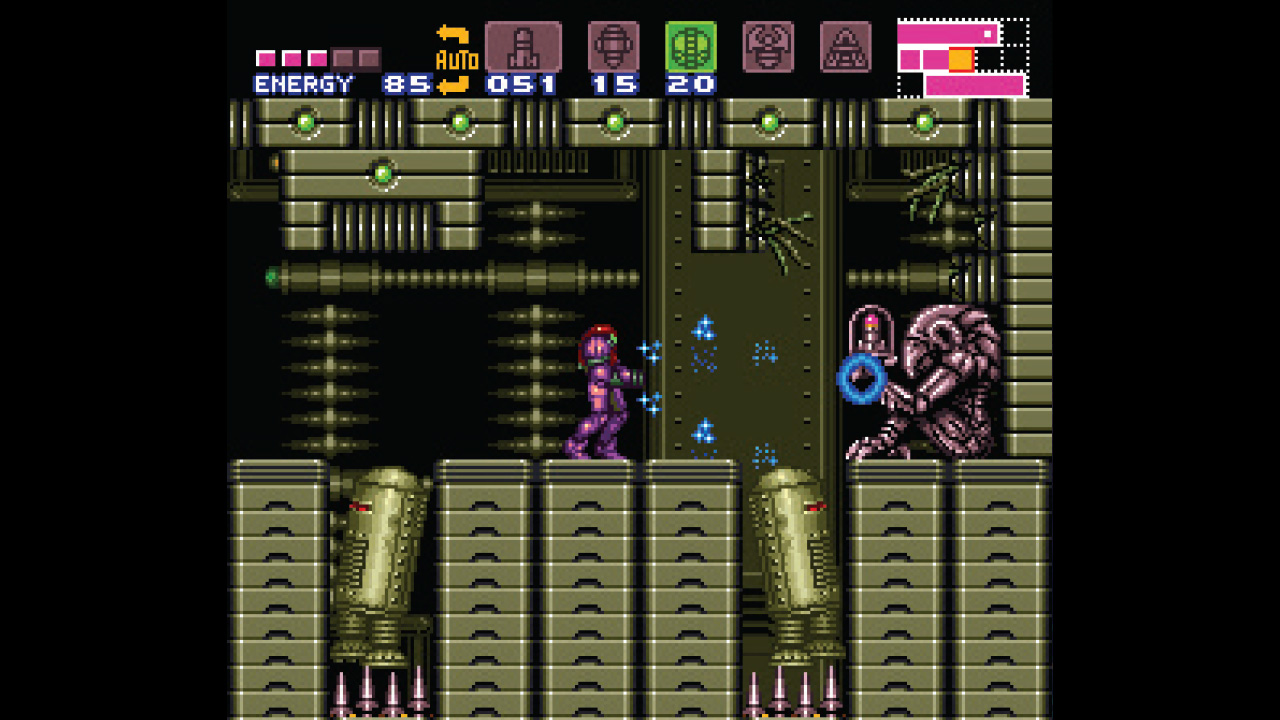
The devs speak!
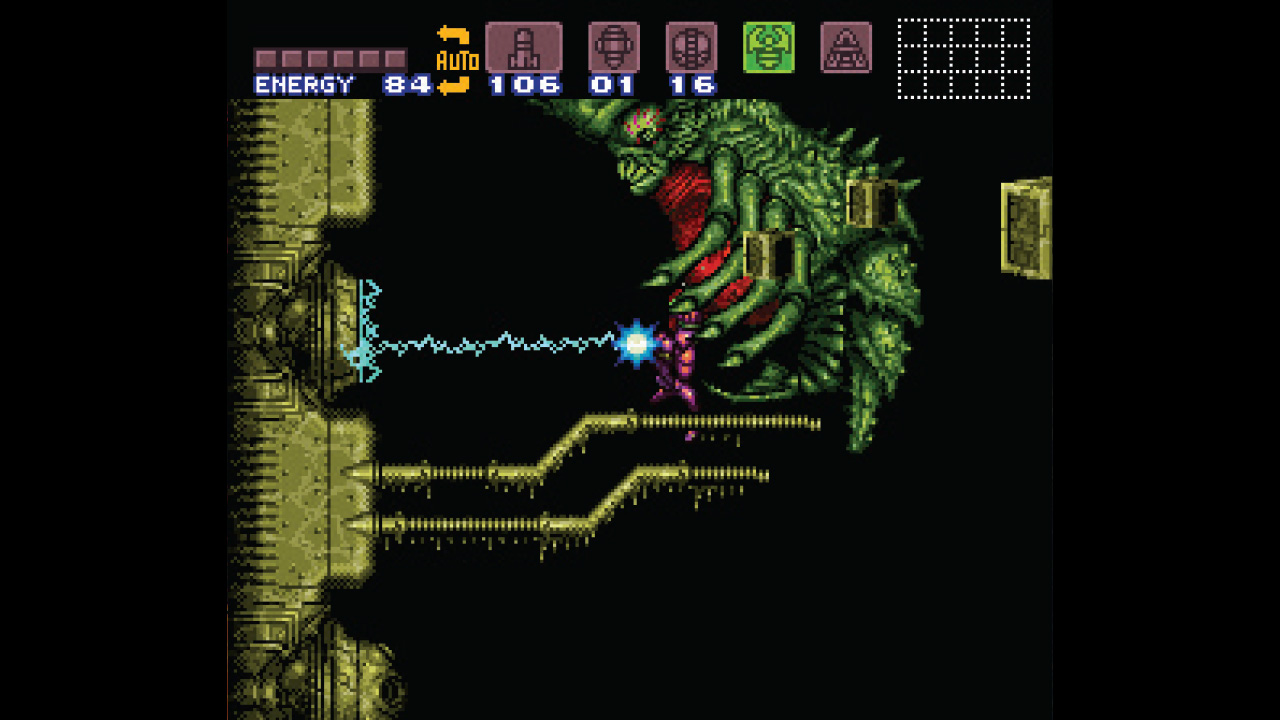
Retro Gamer also spoke with the developers behind Super Metroid itself, so take a look at The Making of Super Metroid for more!
Speaking of power-ups, it’s time to discuss Samus’ impressive arsenal (see the Armed Aran panel). Despite starting directly after Metroid II: Return Of Samus, the bounty hunter retains very few of her powers when she lands on Zebes, even though several are shown in the game’s attract sequences.
Cass offers an interesting explanation and suggests it could be down to design. “They want to give players a taste of the abilities that Samus will have later in the game. When the player [doesn’t have Samus’ key abilities], they can feel their absence which makes getting them feel even better. It’s also delightful when you get a new upgrade that Samus didn’t start with at the beginning of the game.” Cass also feels that the loss of these abilities early in the game helps fill in some of the missing story narrative. “Samus is supposed to be a skilled bounty hunter, so she should arrive on Zebes prepared with an arsenal of weapons. When she [doesn’t have] her powers, it makes her feel even more badass as the player earns her powers back and some new powers than what she started with. This creates a strong connection between the player and Samus as a character that dialogue or cutscenes alone never could.”
Another key strength of Samus’ arsenal is that they’re not just used to destroy enemies, but offer other purposes, from opening doors to solving puzzles. “The way that this game turns mechanics into effective tools for the player to overcome not just enemies, but the world, is the cornerstone to the genre,” explains Tim. “It will always feel good to the player because they will feel that a weapon or new ability they found isn’t just about killing things in front of them but it is also about feeling clever figuring out how to use it to progress.” Jacobo also enjoys the multipurpose approach of Samus’ weapons and skills. “I like the way the game tempts you to try different uses for Samus’ abilities, even the most unexpected ones. For example, when you freeze an enemy and discover that you can use them as a platform or that you can latch onto them with the Grappling Beam and swing around. It does it in a way that, when you get it, makes you think you’re smarter than the game when the reality is that it was always there for you to find out.”
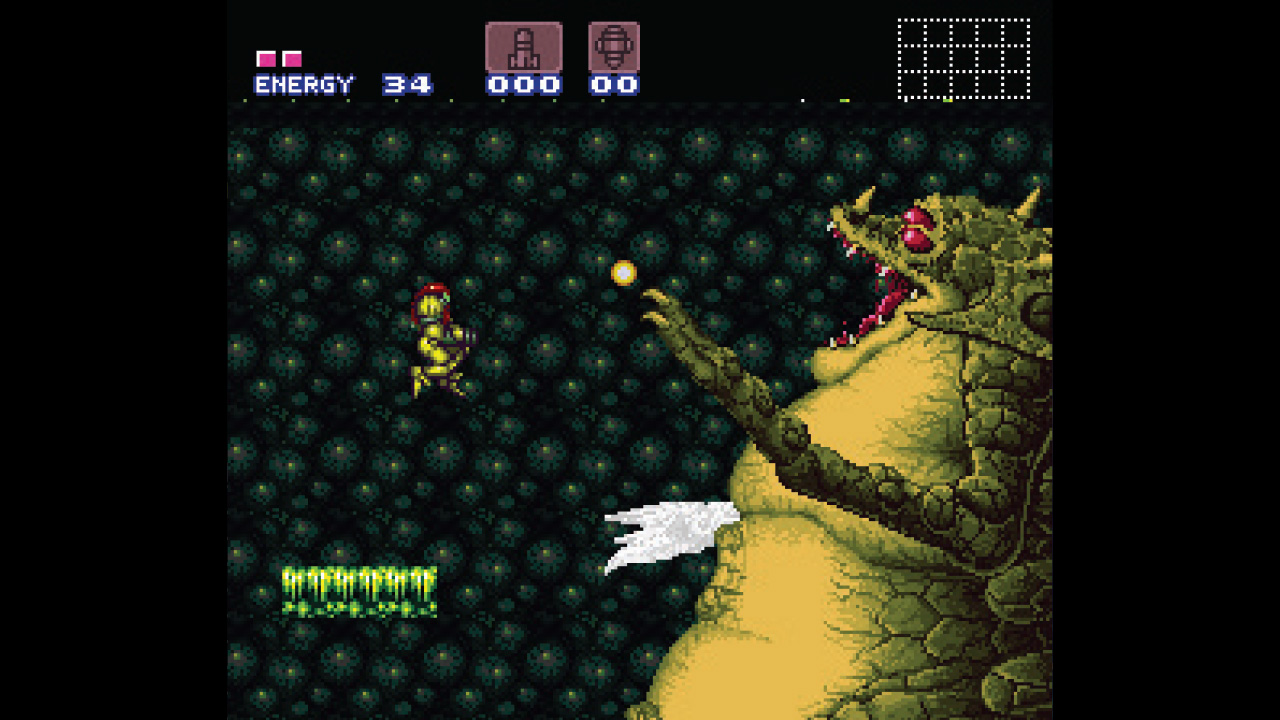
For Simon, it’s the interactivity in the world that these items and abilities give you that he finds most impressive. “Something I always value in games is when your abilities have an actual effect on the world around you. If I were to pick something more specific, I’d point to the Speed Booster. On its surface, it’s a pretty limited and clunky ability. But If you take what I said into account, the Speed Booster becomes a puzzle of trying to map out a runway that will either lead to a new area, or let you bulldoze through something that was previously a big challenge.”
It’s a good job that Samus’ weapons and abilities allow her to be so resourceful because Super Metroid’s bosses are certainly not to be taken lightly. While some return from past games, many others are brand-new to the series, but all pose unique challenges, something which isn’t lost on Simon. “I really love that there’s a palpable sense of buildup, long before you reach a boss. Ridley is one of the first things you see in the game, and not long after, you discover his statue, along with several other monsters. This creates a sense of anticipation, waiting to see who they will be. You can even start to guess at their abilities, based on what the environment is like. For example, even before you reach the Spore Spawn, you’ve come across plant matter taking over the area, hinting at what is to come. For a time when the common design for a boss was to just throw one at you when you had reached the end of an area, making you aware of who you would face was a really nice touch.”
Forbidden Planet
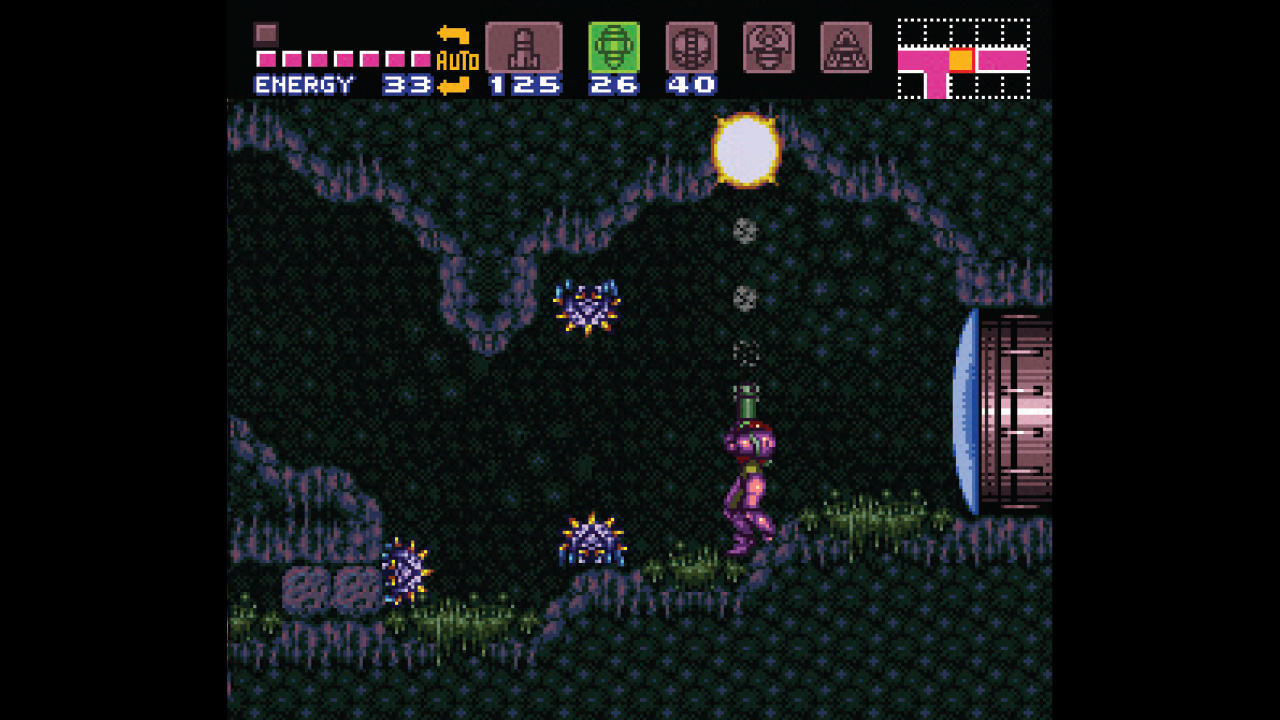
“Mother Brain is the best example, with the fight containing an entire three-act structure.”
Ian feels that one of the most impactful aspects of Super Metroid’s mayors is that they’re so much more than a sum of their parts. “So much attention was paid to everything surrounding them, not just to the bosses themselves. The eerie, atmospheric trek to reach Phantoon. The surprise and subversion of a Chozo Statue springing to life and attacking you. The adventurous, climactic journey into Ridley’s fiery lair for a rematch against a foe who already bested you. Mother Brain is the best example, with the fight containing an entire three-act structure inside it. They’re dramatic experiences you don’t quickly forget.”
Jacobo feels that Super Metroid’s bosses do a great job of challenging the player to use their new weapons more effectively. “Every time you get a new ability, you have the feeling that what you were having trouble overcoming is no longer a problem. You feel like Samus is overpowered and your level of tension drops drastically.
However, when you enter a boss arena something happens. An uneasy calm ensues, culminating in the appearance of the boss that is visually and technically impressive. It is at that moment that you realise what you are [facing] but you only need to take a breath and prepare for the pressure of the battle.” Jacobo was also keen to point out the flexibility in how you can tackle certain bosses. “One of the things that stood out to me personally is that you can defeat bosses in more than one way. Apart from their visuals, it is something that as a player stays with you.”
Mother Brain drain
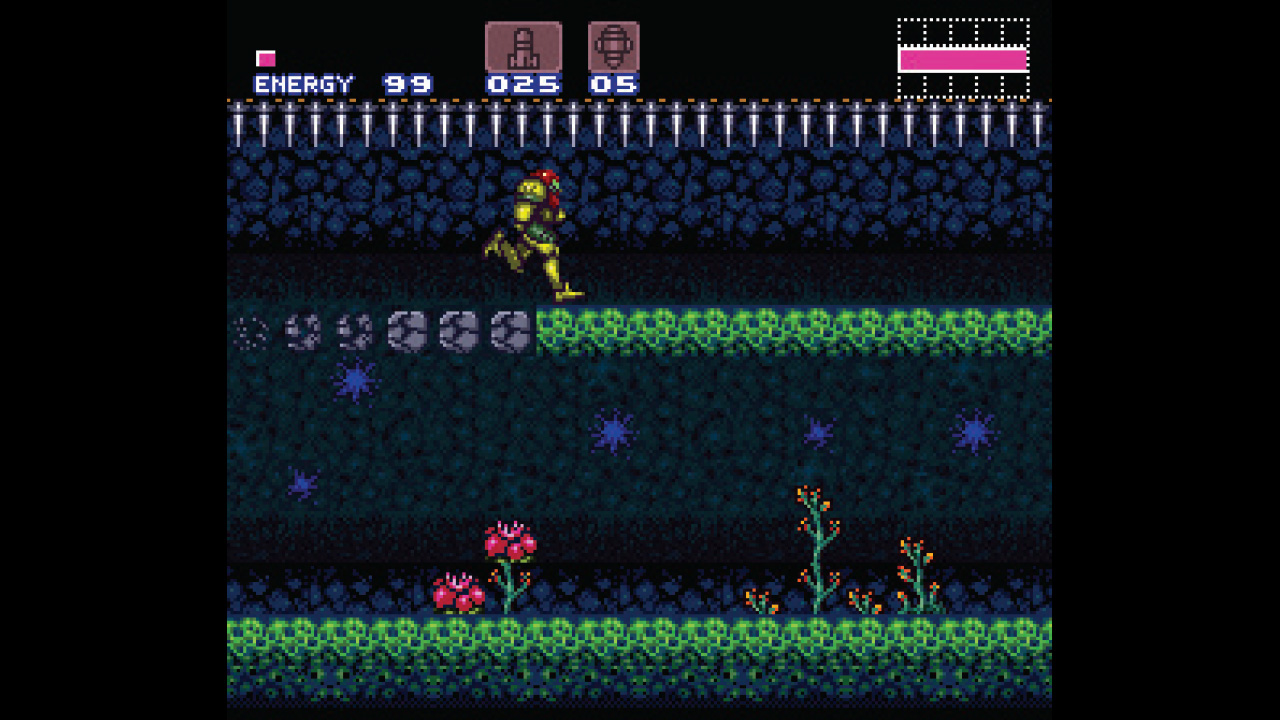
For Derek, Nintendo’s decision to use them sparingly is a big part of their success. “For me, the boss battles are so good because they’re relatively few and far between, so when you encounter a boss, it’s always a big moment that leads to great satisfaction,” he says. “Secondly, many of the bosses have these surprising cinematic moments that happen while you’re still playing (in other words, they don’t switch to a cutscene). The initial encounter with Ridley where he emerges from the shadows is a great example of this, as well as the final showdown with Mother Brain. It’s rare to play a game that tells a story so seamlessly through its battles.”
Even though Super Metroid is an immense experience and one of the best games of its type, it’s not without its foibles. Playing through it again recently highlighted the difficulty of using Samus’ Wall Jump and Space Jump and it sounds like we’re not the only ones who have niggles with the game. “The thing that bothers me the most is the Space Jump,” says Thomas, “it not only lets you fly almost anywhere but turns Metroid’s Screw Attack into a godlike superpower. I felt it just wiped away any sense of tension or horror.”
Jack feels that aspects of Samus’ controls could have been tightened up, telling us, “The controls have not aged well for weapon switching and diagonal shooting – these were greatly improved in subsequent games.” Tim on the other hand feels that there are times in Super Metroid when, “Progress is extremely binary and linear, which can create frustration for players who hit a wall and can’t find the answer to what to do next. Some of this was also the limitation of the era of consoles and tech, though.”
Speeding up
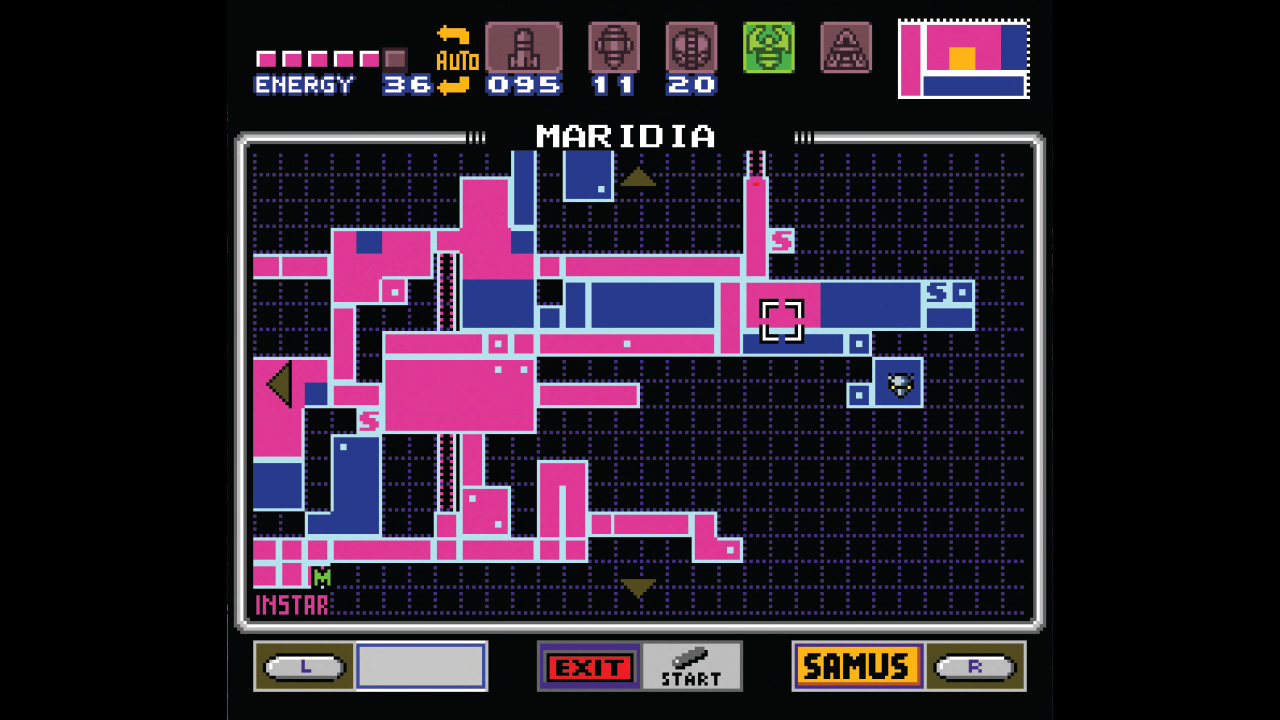
It’s worth noting that while mechanics like the Wall Jump and Super Jump can be difficult to use, they’re a huge asset for speedrunners and those who want to sequence break the game by getting items long before they typically would be able to.
“Super Metroid is extremely popular in the speedrunning community because there are tons of ways to complete it thanks to a lot of glitches and techniques that were creatively named by the community, such as the Chainsaw Beam, the X Factor, Arm Pumping or the Spacetime Beam,” Glaedrax tells us. “You can even complete the game by doing the bosses in reverse order! The physics of the game in addition to the glitches allow for a lot of skill expression, sequence breaking and creativity for the player, making Super Metroid an inevitable pick for speedrun charity events and ensuring a good time for both the viewers and the runner. To this day, players are still finding clever ways to shave off extra time or even invent entirely new routes and fun challenges.”
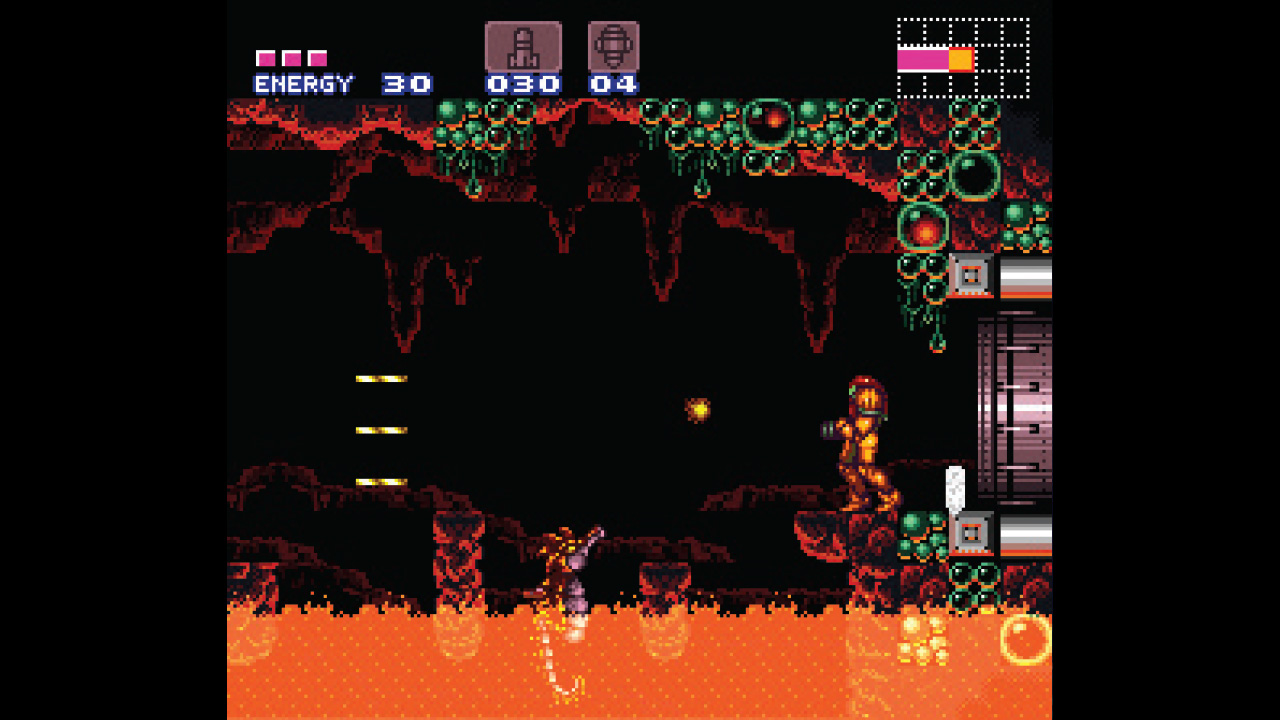
One baffling aspect of Super Metroid is that despite its success, few other games of the time would emulate it. Derek feels this could be down to timing. “At the time, I think Super Metroid felt like a singular experience rather than the beginning of a new genre,” he offers. “It also came out near the transition from 2D to 3D in mainstream gaming, so there probably wasn’t a lot of incentive to make something that would have been perceived as a Super Metroid clone.” While it’s currently available to modern gamers via Nintendo’s Switch Online service it has never been remade, although Jack says its DNA can be found throughout Metroid Prime. “I have a difficult time thinking of aspects of Super Metroid that did not influence Metroid Prime. We were never going to be a remake [of Super Metroid], but we wanted it to feel similar.”
It’s highly likely that Metroid Prime is the closest we’ll ever get to a 3D interpretation of the classic game, but Jacobo was quick to point out that the influence of both Super Metroid and Metroid can still be seen in numerous modern games. “Metroid Prime is certainly one of those examples in which you realise that if the mainstays that shape a genre are strong, they will work regardless of the time and technology. Furthermore, over time there are other genres that have been incorporating Metroid elements into their games, coexisting with them to make them evolve. Clear examples of this are games like the Batman Arkham saga, the new Tomb Raider saga, the Star Wars: Jedi saga, the Darksiders saga or many Soulslike games. Not to mention great examples in the indie scene.”
It might be three decades old now, but it’s easy to see why Super Metroid remains such an enduring masterpiece and is loved by so many gamers. “It was groundbreaking at the time and still holds up as compelling, fun and unique,” offers Jack. “Even with all that has come after it and iterated on its systems, I can still sit down and play through all of Super Metroid and enjoy it 30 years later. That says a lot.”
In the mood to jump into the series? Check out our best Metroid games for help on which gaming planet to land on next! Or something different? Then perhaps our best Metroidvania games will be of more use!
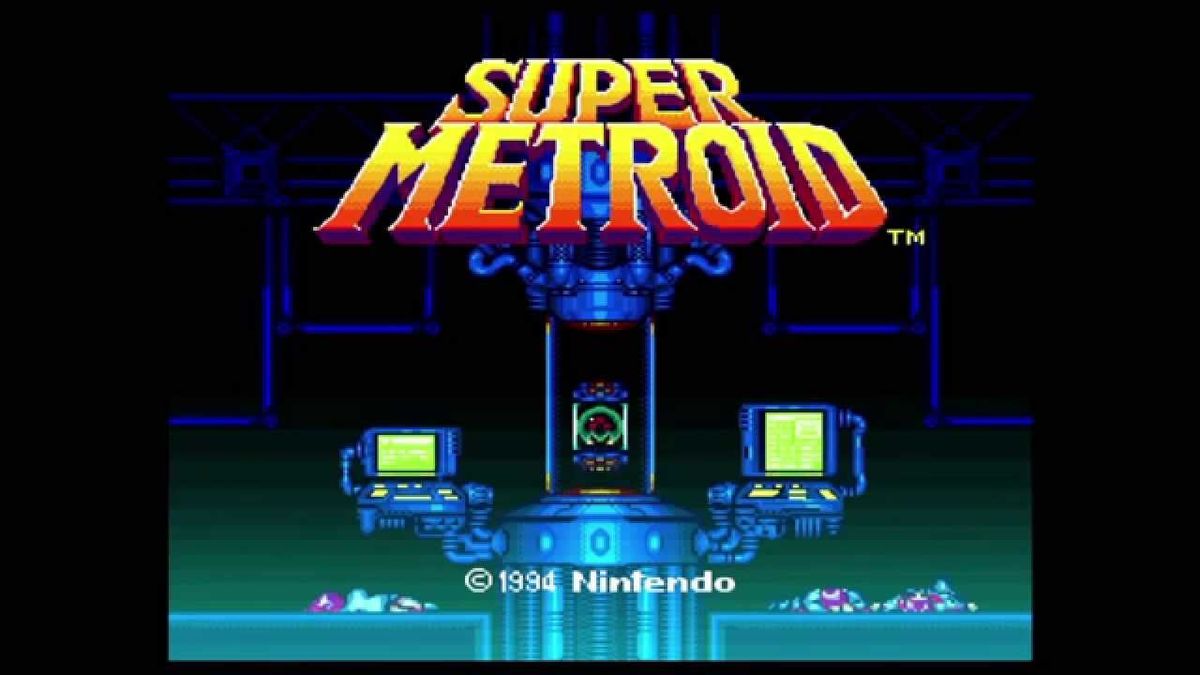

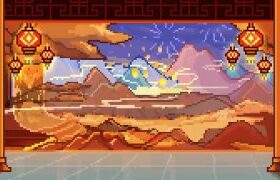



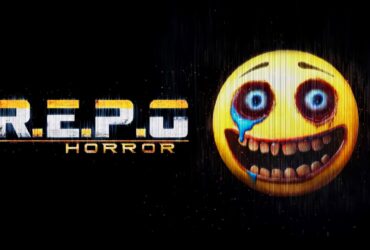

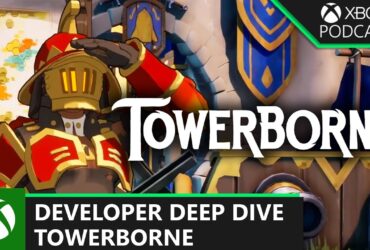


Leave a Reply